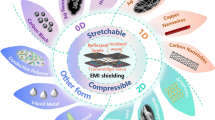Abstract
Dielectric Elastomer Generators (DEGs) are promising devices able to convert mechanical to electrical energy by exploiting the variations in the capacitance of a deformable dielectric membrane. In this work the optimal performance of DEGs in-plane equibiaxial loading configuration is investigated. We analyze a four-stroke cycle which is chosen due to its simplicity and availability. Four failure modes of the DEG are accounted for: electric breakdown, electromechanical instability, ultimate stretch, and loss of the in-plane tensile state. Explicit expressions for the electromechanical fields in the membrane and the harvested energy are derived, and a constraint optimization procedure is employed to determine the optimal cycles. We find that if the electric breakdown strength is larger than a certain universal threshold value, the optimal cycle is independent of this parameter. This threshold value depends on the membrane ultimate stretch, and this dependence is different for low, moderate or high ultimate stretches. Analyses of DEGs with membranes belonging to the three regimes demonstrate that the DEG failure depends on the electric breakdown strength and the ultimate stretch. Accordingly, a diagram with six subregions corresponding to the type of failure is introduced as a design tool. DEGs with multi-layered membranes of two commercially available materials, an acrylic elastomer and a natural rubber, are considered. The number of layers is set according to a predefined load capacity parameter. We find that membranes with a moderate ultimate stretch ensure a cycle more efficient than those with high ultimate stretch, since a larger portion of the invested energy is converted.






Similar content being viewed by others
References
Anderson IA, Gisby TA, McKay TG, O’Brien BM, Calius EP (2012) Multi-functional dielectric elastomer artificial muscles for soft and smart machines. J Appl Phys 112:041101
Antoniadis IA, Venetsanos DT, Papaspyridis FG (2013) DIESYS—dynamically non-linear dielectric elastomer energy generating synergetic structures: perspective and challenges. Smart Mater Struct 22:104007
Bertoldi K, Gei M (2011) Instability in multilayered soft dielectrics. J Mech Phys Solids 59:18–42
Bortot E, Springhetti R, Gei M (2014) Enhanced soft dielectric composite generators: the role of ceramic fillers. J Eur Ceram Soc 34:2623–2632
Chiba S, Waki M, Kornbluh R, Pelrine R (2011) Current status and future prospects of power generators using dielectric elastomer. Smart Mater Struct 20:124006
Dorfmann A, Ogden RW (2005) Nonlinear electroelasticity. Acta Mech 174:167–183
Gei M, Colonnelli S, Springhetti R (2014) The role of electrostriction on the stability of dielectric elastomer actuators. Int J Solids Struct 51:848–860
Huang J, Shian S, Suo Z, Clarke DR (2013) Maximizing the energy density of dielectric elastomer generators using Equi-Biaxial loading. Adv Funct Mater 23:5056–5061
Kaltseis R, Keplinger C, Koh SJA, Baumgartner R, Goh YF, Ng WH, Kogler A, Tröls A, Foo CC, Suo Z, Bauer S (2014) Natural rubber for sustainable high-power electrical energy generation. RCS Adv 4:27095
Koh SJA, Zhao X, Suo Z (2009) Maximal energy that can be converted by a dielectric elastomer generator. Appl Phys Lett 94:262902
Kornbluh RD, Pelrine R, Prahlad H, Wong-Foy A, McCoy B, Kim S, Eckerle J, Low T (2011) From boots to buoys: promises and challenges of dielectric elastomer energy harvesting. In: Bar Cohen Y, Carpi F (eds) Electroactive polymer actuators and devices (EAPAD), Proceedings of SPIE, vol 7976. Bellingham
Lallart M, Cottinet PJ, Guyomar D, Lebrun L (2012) Electrostrictive polymers for mechanical energy harvesting. J Polym Sci B Polym Phys 50:523–535
McKay TG, O’Brien BM, Calius EP, Anderson IA (2011) Soft generators using dielectric elastomers. Appl Phys Lett 98:142903
McMeeking RM, Landis CM (2005) Electrostatic forces and stored energy for deformable dielectric materials. J Appl Mech 72:581–590
O’Halloran A, O’Malley F, McHugh P (2008) A review on dielectric elastomer actuators, technology, applications, and challenges. J Appl Phys 104:071101
Plante J-S, Dubowsky S (2006) Large-scale failure modes of dielectric elastomer actuators. Int J Solids Struct 43:7727–7751
Rudykh S, Bhattacharya K, deBotton G (2012) Snap-through actuation of thick-wall electroactive balloons. Int J Nonlinear Mech 47:206–209
Rudykh S, deBotton G (2011) Stability of anisotropic electroactive polymers with application to layered media. Z Angew Math Phys (ZAMP) 62:1131–1142
Shmuel G, Gei M, deBotton G (2012) The Rayleigh-Lamb wave propagation in dielectric elastomer layers subjected to large deformations. Int J Nonlinear Mech 47:307–316
Springhetti R, Bortot E, deBotton G, Gei M (2014) Optimal energy-harvesting cycles for load-driven dielectric generators in plane strain. IMA J Appl Math 79:929–946
Tröls A, Kogler A, Baumgartner R, Kaltseis R, Keplinger C, Schwödiauer R, Graz I, Bauer S (2013) Stretch dependence of the electrical breakdown strength and dielectric constant of dielectric elastomers. Smart Mater Struct 22:104012
Vertechy R, Fontana M, Rosati Papini GP, Bergamasco M (2013) Oscillating-water-column wave-energy-converter based on dielectric elastomer generator. In: Bar Cohen Y (ed) Electroactive polymer actuators and devices (EAPAD), Proceedings of SPIE, vol 8687. Bellingham
Vu-Cong T, Jean-Mistral C, Sylvestre A (2013) New operating limits for applications with electroactive elastomer: effect of the drift of the dielectric permittivity and the electrical breakdown. In: Bar Cohen Y (ed) Electroactive polymer actuators and devices (EAPAD), Proceedings of SPIE, vol 8687. Bellingham
Acknowledgments
MG and EB acknowledge financial support from the EU FP7 project PIRSES-GA-2013-610547-TAMER. GdB acknowledge the support of the Israel Science Foundation founded by the Israel Academy of Sciences and Humanities (Grant 1246/11).
Author information
Authors and Affiliations
Corresponding author
Rights and permissions
About this article
Cite this article
Bortot, E., Gei, M. & deBotton, G. Optimal energy harvesting cycles for load-driven dielectric elastomer generators under equibiaxial deformation. Meccanica 50, 2751–2766 (2015). https://doi.org/10.1007/s11012-015-0213-1
Received:
Accepted:
Published:
Issue Date:
DOI: https://doi.org/10.1007/s11012-015-0213-1




